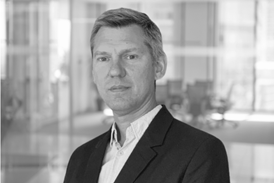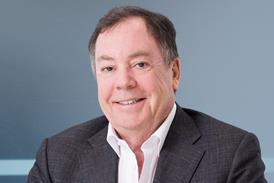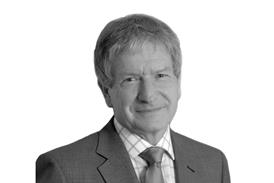That's why the ASPIRE National Training Centre in Stanmore is such a refreshing development. Conceived back in 1995, the 1800 m2 steel-framed extension to the Michael Heaffey Sports and Rehabilitation Centre opened last September. Standing on the campus of the Royal National Orthopaedic Hospital, the Centre demonstrates in real terms that it is possible to procure a fully-accessible building which disabled people can use on the same terms as the able-bodied. In fact, the Centre is the first of its kind in Europe.
The building combines a swimming pool, dance and exercise studio, computer training suite and café, all neatly housed in a two-storey glass and timber pavilion. Although it mainly caters for spinal injury victims (ASPIRE is the Association for Spinal Injury Research, Rehabilitation and Integration), there is also provision for those with hearing and visual impairments and people suffering from learning difficulties. Tactile coding on staircase handrails and a fully-integrated hearing induction loop system throughout see to that.
To achieve such a level of integration, consideration has necessarily been given to the total environment. Every facility is accessible and available to people with disabilities, including those who are tetraplegic and dependent on carer support. All door thresholds and the emergency escape ramp at the rear of the building, for instance, have been configured for wheelchair access, while all features from signage through to the manual controls in the basement plantrooms are set at a height appropriate to wheelchair users.
In the double-height pool area, these practical considerations extend from the 25 m competition-standard pool itself – which has ramped access, allowing disabled users to enter the water unaided in specially-designed wheelchairs – to the changing rooms and showers, which have been designed to be used in either standing or seated positions, both singly and by groups of people.
Responding to the brief
The £4.5 million project was partially funded by Allied Dunbar to celebrate the company's Silver Jubilee, and with the support of the Sports Council won matching funding from the Lottery Sports Fund and a separate Lottery grant from the Arts Council. The latter enabled the fit-out of the dance studio for the mixed-mobility CandoCo dance company.
ASPIRE's goal was not to design a wonderful centre for disabled people, but to produce a building that would be uplifting and enjoyable for all those who came to use it – in whatever capacity and to whatever degree of mobility. "The whole point about the building is integration. There are a lot of lessons the able-bodied need to learn about the disabled and disabled access, and the new Centre was procured to educate as much as rehabilitate," said Centre director Martina Crowley. "We also wanted to empower disabled people, and teach them how to take control of their lives."
In order to realise the aims of ASPIRE, all members of the project team had to buy into the Association's ideals, which revolve around opportunity, choice and independence for the less able-bodied. Embedded in the design philosophy is the idea that people designing buildings need to explore comprehensive access as a matter of course and, to this end, several in-depth interviews were undertaken with all potential project members before the client decided on its final build team.
Once on board, project architect Foster and Partners set the ball rolling with some necessary background research, questioning several institutions on the access needs for disabled users. This even extended to Foster and Partners' team members spending time actually using wheelchairs, testing and exploring what size door widths would be required and finding out the optimum location for door handles and switches. This often meant following the spirit of the Building Regulations, rather than the letter.
Fending off competition from two other engineering practices, consultant Roger Preston & Partners then began work on the detailed m&e services design. As the team from Foster and Partners had just completed their research but not designed the space, this enabled the engineers to work hand in hand with the architects and have a major influence on the layout of the building. Something of a rare occurrence, but the results are outstanding and can be attributed in no small part to the care and attention paid by the consultant during the design phase.
"We have spent much more time on this project in explaining to ASPIRE exactly what we were planning and how we were going to carry out our plans," said Roger Preston & Partners' project director Trevor Farnfield. "We had the feeling that this would be time well spent, and as it turned out we weren't wrong."
Building design
Entering the spacious 130 m2 double-height reception area, visitors are channelled towards a tactile, brightly coloured map that delineates the Centre in plan form for the visually impaired. All the signage was developed by Foster and Partners in conjunction with the Royal National Institute for the Blind and Danish graphic artist Per Arnoldi, who also contributed to the building's bright and distinctive colour scheme.
The Centre's signs were developed to satisfy its variety of end-users. They are based around easily recognisable pictograms combined with tactile type of a size and maximum colour contrast – yellow on blue – that provides optimum viewing for the partially sighted, who will thus have to rely less on braille (which is only read by a minority).
The reception space is naturally ventilated with a series of high and low level openings, with air temperatures designed not to exceed 26°C in summer. Underfloor heating and low level perimeter lthw heating services are located along the external facades.
Downlighting from a series of spot lamps provides 200 lux – bright, but necessarily so, given the levels of visually impaired people who use the Centre. This also helps to guide such people towards the glazed Dover lift, which forms something of a centrepiece.
Complete with tactile, backlit controls at around 1200 mm above the lift floor for easy use by the disabled, there are also recorded voice messages to tell users which floor they are at. The lift encourages visitors to make the journey up to the first floor, where the computer training suite, café and pool viewing area are located, or alternatively allow access for maintenance engineers to the basement plantrooms, of which more anon.
Importantly, the lift also unites the new Centre with the adjoining Michael Heaffey Centre, which contains a refurbished gymnasium for quadraplegic rugby and wheelchair basketball, as well as a full fitness centre for disabled and able-bodied users. This existing building was refurbished by the same architect-engineer team under a separate contract.
All circulation areas have been designed to instil a feeling of generosity rather than just simply providing corridors and rooms in the accepted sense. Added to that, all door handles, lavatory flushes, grab rails, taps and other fittings are of a size and shape that ensures maximum usability. Importantly, all were specified after testing samples with people who habitually find standard fittings awkward. Surely this has to be the way forward.
Dance and exercise studio
Immediately to the left of the reception area is the 200 m2 dance and exercise studio, complete with technical gallery, control room and tension-sprung floor in case anyone should fall over during rehearsals or performance. Here, arts and crafts projects are completed in tandem by local comprehensive and special needs schools, helping to get rid of the prejudices that can form in the minds of the able-bodied long before they reach adulthood.
Lighting levels for the studio, which can seat 150 people for performances, are high at around 500 lux, the light sources including a series of dedicated downlights and studio spot lamps. Only around 40% of the lighting is used at any one time and is often dimmed down. Nonetheless, as loads are potentially high the dance studio is the only space in the Centre which is mechanically ventilated, with high level air supply (at 12 litres/s/person) through exposed circular fabric ducts, combined with high level extract.
Design air temperatures in the 7·2 m-high studio are slightly higher than normal at 22-26°C (summer, not controlled) as some disabled people particularly those with spinal injuries – struggle to maintain a suitable body temperature. Insulation along the south west-facing wall consists of a solid panel, with U-values at a standard 0·45 W/m2K.
"On a hot summer's day it could well become quite warm in there," said Trevor Farnfield, "but most of the shows are put on in the evening." With forward thinking at the top of the agenda for this project, Farnfield and fellow project engineer Chris Munn have added space for a cooling coil and a chiller in one of the basement plantrooms so that cooling can be added-in at a later date if needed (cooling was taken out of the base scheme proposal due to cost constraints).
The plan at the moment is to monitor space temperatures for a year or two and then make a final decision.
Designing the swimming pool area
The level deck pool and its surrounding area (526 m2 overall) is probably the most interesting aspect of the building, in terms of both disabled access and maintenance and the building services provision. Like the rest of the building, the pool is designed to convey a sense of calm. Tiling in the pool itself is a strong sky blue for good colour definition. Further visual aids are offered by underwater lighting and the contrasting colours of the white walls and pale ceramic tile surrounds.
The two external walls that abut the pool area are fitted to their full height with double-glazed, low-e windows, the south-facing section boasting rows of solar shading louvres. "This feature was designed-in more as a way of preventing glare on the water surface than to negate solar gains," added Trevor Farnfield. The roof is designed to project beyond the facade on this side of the building to take care of any unwanted solar ingress and, given that the roof is flat, a siphonic drainage system has been deployed. A traditional gravity system serves the reception area.
The 1·5 m-deep pool is built to full Amateur Swimming Association and Sports Council standards, with the designers employing ramped access, allowing users to enter the water unaided. "Hoists are an indignity suffered by many disabled people, and we wanted to get away from that," said Martina Crowley.
Pool water temperature is very high at 30°C±1°C, and it is noticeable how hot it is in the pool area as soon as you traverse the viewing area above and go poolside below. The pool is as much for spinal rehabilitation work as it is for serious training by the able-bodied. Those with spinal injuries often struggle to maintain their body temperature, hence the elevated pool temperatures. A low level trench heating system around the perimeter maintains temperatures for those bathers on poolside.
Incoming air is supplied at 10 litres/s/m2 of wetted pool area from a dedicated basement air handling system in the plantroom. Air flows up through a central steel duct and is then discharged to the space through a trio of blue fabric ducts set inbetween a line of 29 m- long laminated timber beams. A host of nozzle jets discharge the incoming air to the space.
Return air is extracted at mid-level through a row of linear grilles located under the viewing balcony. It is then channelled down to the plantroom through risers and returned to the central air handler. All exhaust air is discharged to atmosphere via louvres in the plantroom. There is full heat recovery on the ventilation plant for energy savings. Brownie points for the engineer here, then.
ASPIRE made it very clear at the outset that it didn't want a pool area that gave off a strong odour of chlorine which, let's face it, can be rather unpleasant even at the best of times. This was essential in any case, given that the pool backs directly onto the computer training suite and the café. With this in mind, the engineers opted to treat the pool water with an ultraviolet (uv) filtration system from Hanovia, complete with residual chlorine as a back-up.
An added benefit of uv treatment is that it is non-irrative to those with sensitive skins, but an even bigger plus point is that the desire for maintenance regimes to be fulfilled by disabled people can be realised given that there are no huge vats of chemicals to lug around.
Computer training suite and café
The naturally ventilated computer suite at the rear of the building plays host to 14 screens and can accommodate up to 20 people at any one time. It offers practical back-to-work courses to complement the process of physical rehabilitation carried out elsewhere in the Centre, with stroke victims visiting on a regular basis in an attempt to try and regain hand-eye co-ordination, etc.
The small power load of 20 W/m2 is supplied by an electrical trunking system cast into the floor slab for maximum flexibility, while the natural ventilation system is supplemented by low level lthw perimiter heating along the external facade.
Immediately next door along the north east-facing facade is the small but comfortable café area. As in the computer training suite, design temperatures are slightly higher than average at between 20-26°C in summer (not controlled) and 18-22°C in winter (controlled using thermostatic radiator valves).
Space conditioning in the café area is via a kitchen extract system, with make-up air provided through a heater battery.
Disabled maintenance
Although the plantrooms located at the rear of the building are notionally basement plantrooms, the south-to-north sloping site means that they actually open onto an external walkway with level access from an adjacent road.
There are individual plantrooms for the electrical supply installation (ie the electrical switchroom, with the building being served by a private ring main which also feeds the main hospital), pool water supply and treatment, a boiler plantroom and an air handling plantroom for the pool, its changing areas and the dance studio.
There is also a spare plantroom at the end of the line for a chiller to serve the dance studio, should one be needed. In all cases, the minimum access-way width for wheelchair users is 1·0 m.
A disabled maintenance regime will soon be in place at the Centre, not only because of the aforementioned uv water treatment installation but because the plantrooms, like the rest of the building, are fully-configured for disabled access – something you don't come across too often.
All items of plant relating to operation, general maintenance and emergency shut-off of the pool system are positioned so as to be operable by wheelchair users. Gauges, control panels, instrumentation and all other items requiring visual inspection are a minimum 0·8 m above the ground, and are designed to be no higher than 1·3 m above ground level.
Valves on much of the kit have been specially-designed to be operable by people in a wheelchair, who have good upper body strength and can operate a single lever far easier than they can the more traditional wheel arrangement.
At the moment the maintenance regime is being carried out by trained staff seconded from the main hospital, but several disabled people are being trained to operate the controls and water treatment plant.
"The disabled maintenance staff will be able to change the pool filters and check the water treatment system operation. They will also be able to monitor the lv panels to see if there is a power failure and, if there is, they can do something about it," stressed Trevor Farnfield. Real empowerment, then. Just like ASPIRE wanted.
The end result
Services engineer Roger Preston & Partners clearly put a great deal of thought into this project, which was undertaken on a no profit basis. "In fact we have lost money on the job due to the protracted pre-construction funding and planning process, but the end result has been worth it," added Trevor Farnfield.
Indeed it has. Since the ASPIRE Centre opened visits have increased by 490%, with disabled membership rising by 130%. You can't always take statistics at face value, of course, so perhaps the last word should go to an end-user to define whether the building is doing its intended job.
Twenty nine year-old Jackie Late is ambulant disabled. Having suffered from a brain tumour and a stroke, she has lost the use of one side of her body. The feeling is gradually returning, but Jackie's muscles remain weak so she travels in to the ASPIRE Centre from St Albans for rehabilitation work.
"The first time I came to the Centre it was heaven," she said. "I now visit the building to swim, use the gym and do exercise classes three or four times each week. I've been to so many hard-to-get-around places, but this building is so easy to navigate. I'm not looking for the obstacles here, which is something I nearly always have to do." One day, maybe all buildings will be designed this way.
ASPIRE Allied Dunbar National Training Centre, Brockley Hill,Stanmore, Middlesex
Mechanical suppliers AHUs: Ciat (UK) Pool hall air handling units: Recotherm Boilers: MHS Boilers Expansion vessels: Wilo Salmson Flue dilution fans: Thelcastle Perimeter heating: Unilock Pumps and pressurisation: Pullen Pumps Pool water pumps: Ingersoll-Dresser Pumps Pool water treatment (ultraviolet): Hanovia Pool water booster sets: Wilo Salmson Toilet extract: NuAire Valves: Hattersley Electrical suppliers BEMS: ICS Controls Cable management: Arena Communications: Laing Telecom Controls: ICS Controls Electrical distribution: MEM Electrical accessories: Wandsworth. MK Fire alarms/detection systems: Protec Floor boxes: Arena Lift: Dover Lifts Luminaires: DAL, Holophane, Concord Bega, Crompton Lighting LV switchgear: MEM Motor control centres: ICS Controls Public address: Planned Equipment Disabled alarm system: Wandsworth Security systems: Chubb Contract details: Tender date: July 1996 Tender system: Competitive Form of contract: Construction management Contract period: 18 months (start date on site: November 1996) Was National Engineering Specification used: No External design conditions Winter: -4°C dry bulb (normal operation), -10°C dry bulb (frost protection) Summer (non a/c): 29°C db, 20°C wb (inlet air) Internal design conditions Winter Reception and computer training centre: 20°C±2°C air temperature Summer Reception and computer training centre: 20-26°C air temperature (naturally ventilated) Winter and summer Pool hall: 30°C±1°C, 60% rh±10% Dance studio: 21°C±2°C, no cooling or humidity control Changing rooms: 25°C±1°C, no cooling or humidity control Pool system design conditions Maximum no of bathers: 75 Maximum no of spectators: 50 Pool water volume: 350 m3 Pool water temperature: 30°C±1°C Pool water supply temperature: 10°C Heat up rate: Max 0·5°C/h Turnover period: 2 h Flow rate: 175 m3 Filtration rate: 25 m3/m2/h Electrical supply: 400/230 V, three-phase, 50 Hz Main sterilisation: ultraviolet Residual sterilisation: sodium hypochlorite pH correction: hydrochloric acid U-values (W/m2K) Roof: 0·4 Walls: 0·45 Noise levels Plantrooms: NR55 (maximum) Reception: NR40 Pool hall: NR45 Pool changing rooms: NR40 Dance studio: NR30 Computer training centre: NR35 Bar/café area: NR40 Toilets: NR40 Corridors: NR40 Ventilation rates Pool area: 10 l/s/m2 wetted pool area, 6 ac/h Dance studio: 12 l/s/person, 7·8 ac/h Engineering data Gross floor area: 1764 m2 Reception area: 129 m2 Pool: 25 m by 9·5 m (double-height space) Dance studio: 180 m2 (double-height, complete with technical gallery and control room) Electrical switchroom: 25 m2 Distribution circuits LTHW: 80°C flow, 70°C return DHWS: 60°C flow, 50°C return AHU heating coils: 80/70°C Pool water heating: 80/70°C Compensated heating: 80/70°C Underfloor heating: 50/40°C Electrical supply High voltage supply, 315 kVA transformers Lighting Types: Linear and compact fluorescent, metal halide, PAR 30 Lux levels Reception: 200 Offices: 300 Pool hall: 200 Pool changing rooms: 100-200 Dance studio: 500 (general) Kitchen: 300 Computer training suite: 300 Toilets: 150 Stairs: 150 Circulation areas: 150 Lift Single 1500 kg electro-hydraulic glass passenger lift running @ 0·6 m/s Cost Total cost: £4.5 million M&E services costs Total m&e services cost: £700 000 Pool water treatment: £125 000 Lift: £51 000Downloads
Site Plan
Other, Size 0 kb
Source
Building Sustainable Design
Credits
Client ASPIRE (Association for Spinal Injury Research, Rehabilitation and Reintegration) Construction manager Laing Management Architect Foster and Partners M&E consulting engineer Roger Preston & Partners Acoustic consultant Sandy Brown Associates Lighting consultant Claude Engle Structural engineer Waterman Partnership Cost consultant Davis Langdon & Everest M&E contractor Kvaerner Rashleigh Weatherfoil Lift contractor Dover Lifts Pool water treatment contractor Ardep




















